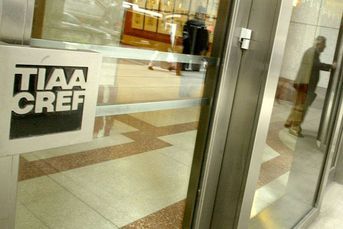Ways to improve adviser adoption of new technology

Buying the tools is only the beginning. Firms must follow up with incentives, training and hand-holding for some.
Now that you have new tech, here’s how to get advisers on board
A lot is said about the benefits of technology for advisers, but less is said about how advisers can actually realize those benefits.
After all, simply buying the latest gadget rarely, if ever, translates into getting the most out of it. There’s a world championship for proficiency in Microsoft Excel, the 31-year-old spreadsheet program listed as a skill on just about every office worker’s résumé. And how many people really use every feature or function on their $1,000 iPhone?
The same is true when it comes to adviser technology, but the wealth management industry faces additional obstacles that impede adoption and make it harder for firms to realize a return on the investments they make in the latest tools.
Too often after a home office buys new technology, advisers are left to figure out how to use it on their own, according to Andrew Altfest, managing director of Altfest Personal Wealth Management.
Speaking at InvestmentNews‘ annual Fintech Think Tank, Mr. Altfest said there is little in the way of standards, benchmarks or support from vendors following the purchase of new technology.
“It’s really up to us to organize our firm correctly so that everyone at the firm is really getting the benefit that we’ve all been promised and we’re all going for,” he said.
Too many choices
Escalating the adoption problem is the overwhelming amount of technology now available to advisers. It was easy to get 100% adoption 10 years ago when brokers only needed tech to view client accounts, get a report and execute trades, said Tom McCarthy, senior vice president and head of platform technology at Fidelity Investments.
Now firms have to worry about client experience, mobile connectivity, application programming interfaces, or APIs, cybersecurity and a host of other issues.
“You’re going and shopping at Costco where you used to be able to buy three or four, and too much choice is not good for people,” Mr. McCarthy said. “That choice has wrapped a lot of our clients in knots that they overbought, they overconsumed [and] created Frankenstein in tech stacks.”
The result is a bunch of technology solutions that don’t communicate with each other and become more of a hassle than they’re worth, discouraging even more advisers from bothering to learn how to use them.
After identifying these challenges and others (legacy systems, a disconnect between leadership and users), InvestmentNews tasked leaders from various firms and technology vendors to think of new ways to solve them. What can firms do to achieve a modest benchmark of 50% technology adoption?
One idea was to speak the language advisers understand best: money. If firms implemented a surcharge for not using technology — for example, a $50 fee to open accounts with paper documents rather than using a free digital account opening tool — it could disrupt adviser inertia and incentivize them to learn a new system.
Advisers called for technology vendors to do more in the way of presenting case studies of successful product implementations and share metrics that firms can use to benchmark their own adoption. They also suggested developers focus on making frequent, small updates to tech products rather than big releases that require intensive training sessions — similar to regular updates pushed by consumer-facing technology and mobile apps.
Shift in culture
Making adviser technology as user-friendly as Amazon was a popular idea among many participants, but others suggested that the underlying complexity of the wealth management business can’t be made as simple as online shopping. They believe what’s needed instead is a shift in firm culture and improvements in training.
To start, adoption should begin with senior leadership to prevent a disconnect between people making decisions about technology and the people actually using it. A multifaceted communication chain, where everyone from the tech supplier or custodian to the home office to the end adviser participates, is recommended.
(More: AI, blockchain take center stage at SIFMA fintech event)
Another idea was to publicize which employees are utilizing new tech tools to stimulate competition. Firms could also designate these power users or “tech gurus” as leaders for various tech initiatives — answering questions and sharing ideas with colleagues.
Finally, Fintech Think Tank participants said training programs need to improve to encourage adoption among the most tech-averse advisers.
“You have to handle them differently as you’re trying to get people to adopt,” said Bob Conchiglia, vice president of advisory sales at SS&C Advent.
While webinars are enough for early adopters, and road shows and boot camps work for average advisers, others need more in-person hand-holding, he said. “To get full adoption, or as much as you can get full adoption, you have to take a different approach at each stage.”
Learn more about reprints and licensing for this article.








